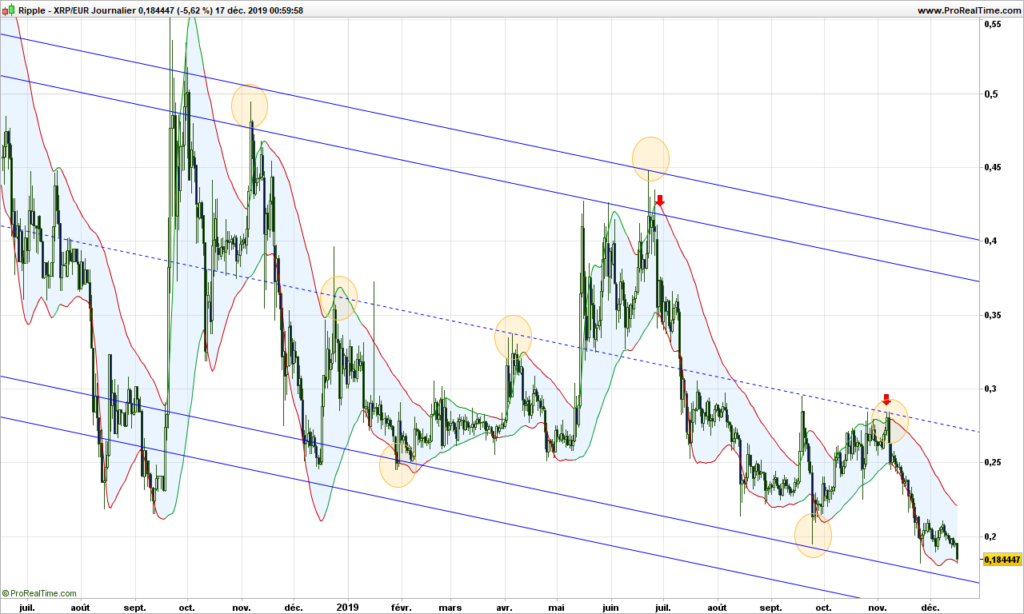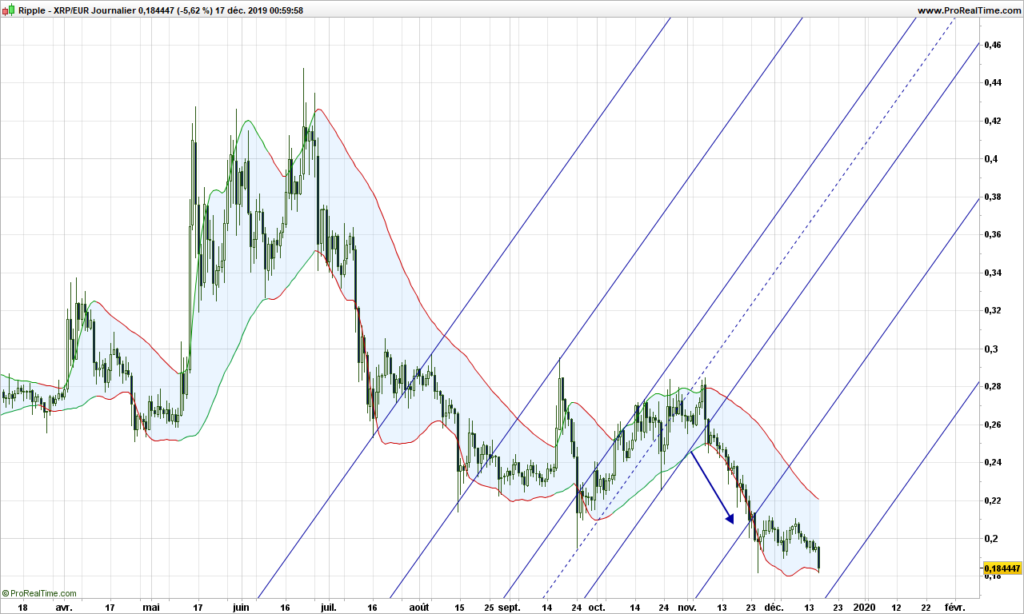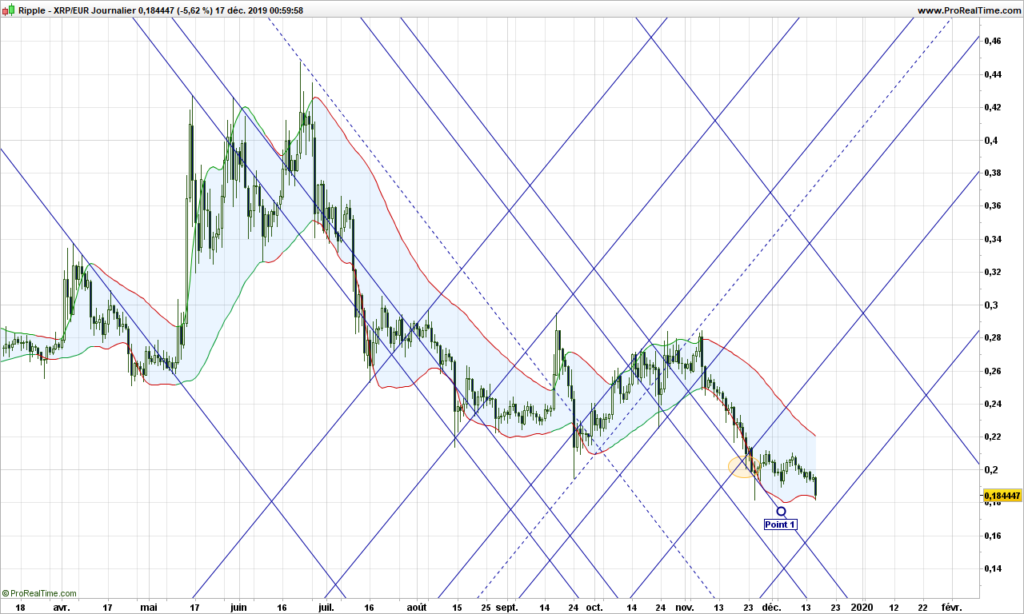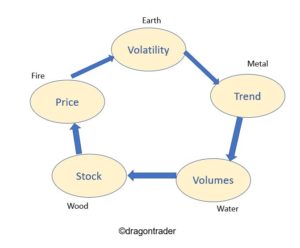We have previously discussed the win/loss ratio and the impact on occurrences of winning and losing streaks. You may fix it somehow, especially if you are lucky, but if, like for normal humans, it is not always the case, then it is not enough to be profitable.
Imagine the following:
- Winning percentage: 40% Loosing percentage: 60%
- Average performance of winning trades: 20%
- Average loss of losing trades: 15%
Then your gain expectation over 100 trade is .4*20-.6*15 = -1%
Your expectation is negative, you will not win over the long term! Remember it is an average expectation, the actual can be far lower.
Whatever your win/loss ratio, the risk/reward ratio is here to help counterbalance the effect of luck. Say you bet 1€, you may lose it or gain it back. Is it worth playing it? NO! You are better off keeping your 1€ in your pocket.
It is the same for trading. If you bet 100€, you wish to get at least 150€ or much more. This is sometimes called asymmetric position. The risk/reward is calculated opposite:
%RR = (potential reward) / (risk taken)
In our case: %RR= 150/100 = 1.5
To be honest, I never take trade with %RR less than 2.
You will see in many books or websites that you should never risk more than 1% of your trading capital on a single trade. It tends to be confusing for many because this 1% tends to become bigger as capital grows and since you still want to sleep at night, it is better think in a different manner.
The question to ask yourself is this: if you lose 100€, does it hurt? No? what about 200€? 300€? Oups it hurts too much! So be it, you are just above the pain threshold.
Take note of this value, this is the (absolute) risk, the divisor in the calculation above.
I have discussed previously how-to guesstimate a potential objective (with drunkard’s walk for instance).
So, we are ready to trade!
Let’s take an example. A signal (green arrow) indicates you have trading opportunity. We assume you will buy tomorrow just above today’s high at 3.56€. The stop is at 3.18€ and possible objective is 4.31€
%RR = (4.31 – 3.56) / (3.56 – 3.18) = 1.97
Not too bad, uh?
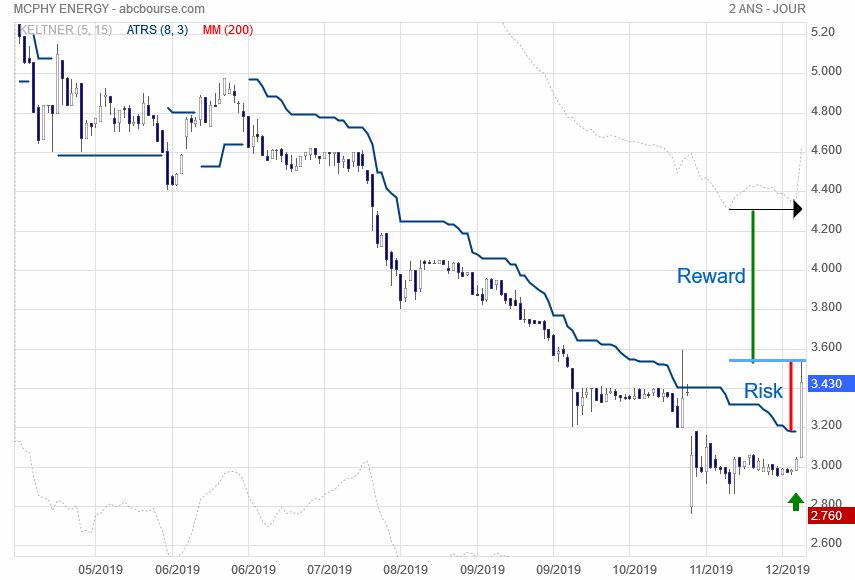
Now we need to ensure you are not crossing the pain threshold! Let’s assume for a moment that it is 100€. Small but why not.
Now you can size your position accordingly.
The risk for each stock you buy is 3.56 – 3.18 = 0.38€
Therefore, the number of stocks you can buy = 100€ / 0.38€ = 263 (rounded)
So you will invest: 263 * 3.56 = 936€.
Just be sure to sell if the stop is reach so that your pain does not exceed too much 100€.
Should the objective be reached, you will have gained: 263*(4.31 – 3.56) = 197€. In line with our win/loss ratio 🙂
If all goes well, after a few days, the calculated stop will start hiking up, so your risk will be void. After objective is reached, feel free to take back some profit and let your profits run.
How did it go for this trade? It went far beyond my expectations!
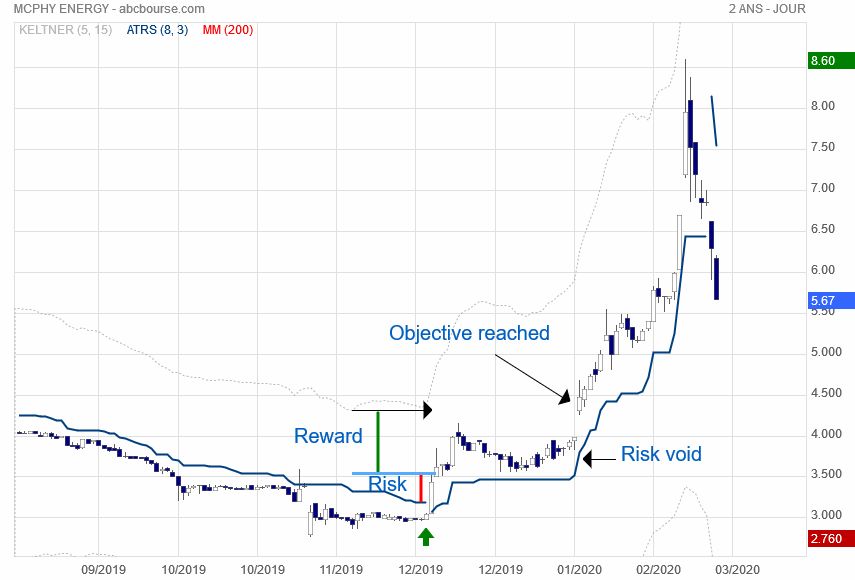
In summary, you may be a stoical kind and only look at the risk in percentage or relative view. For most of us, it makes more sense to look at the risk in absolute value and sleep well at night because we are not risking more than we can afford money-wise and psychology-wise.

